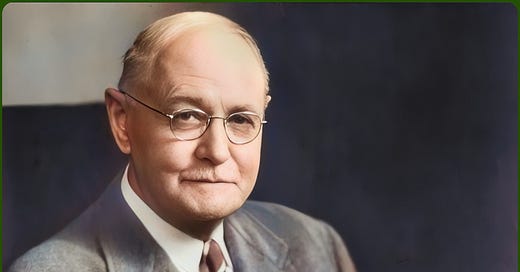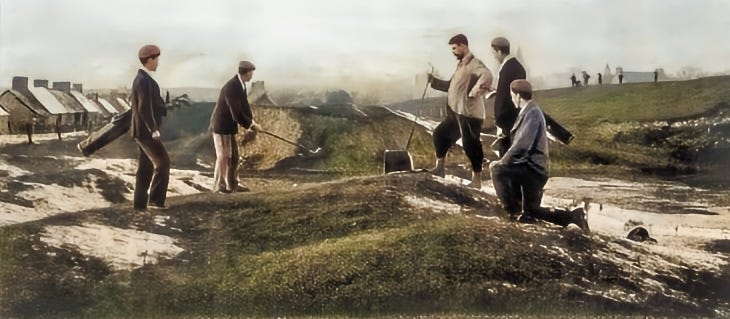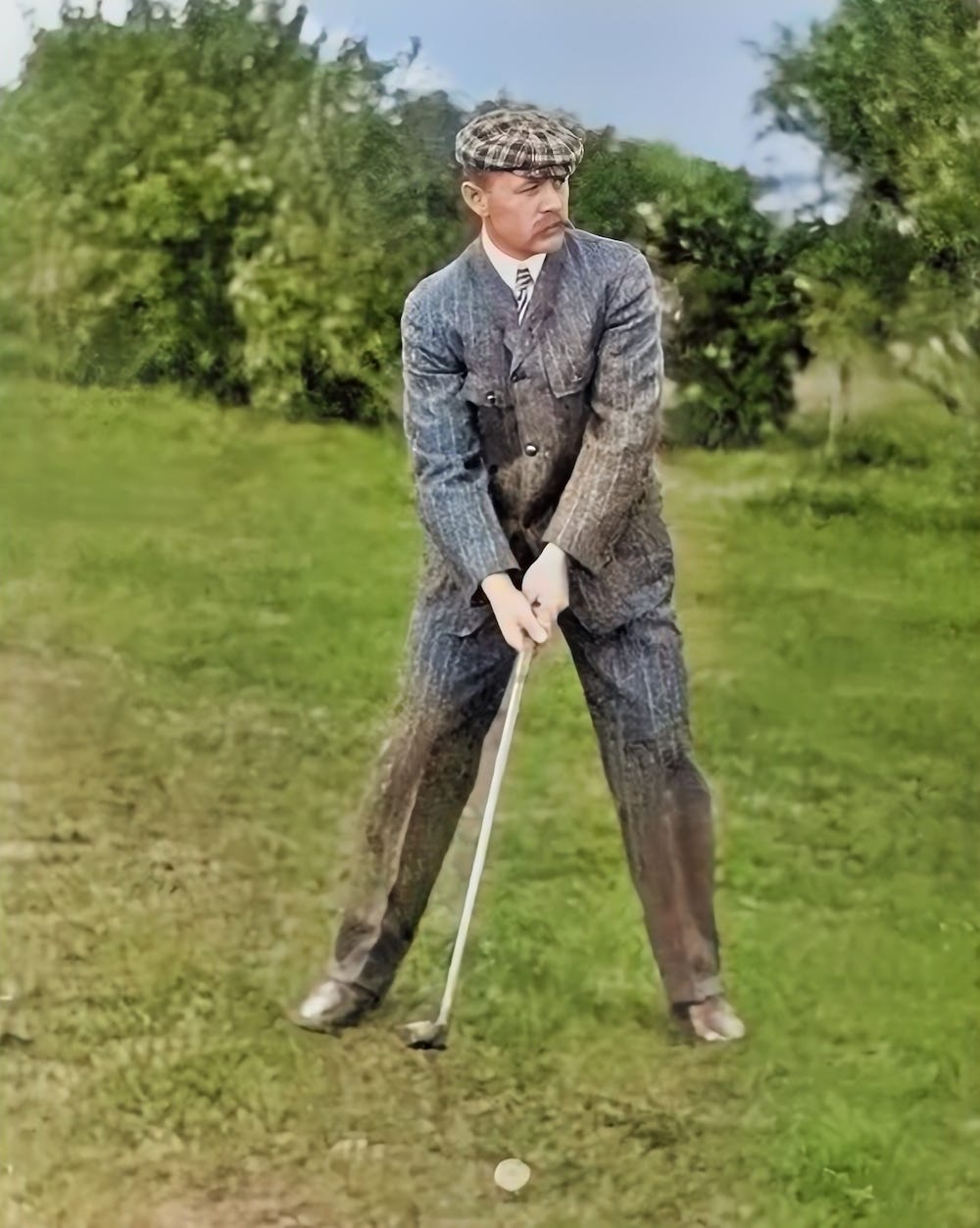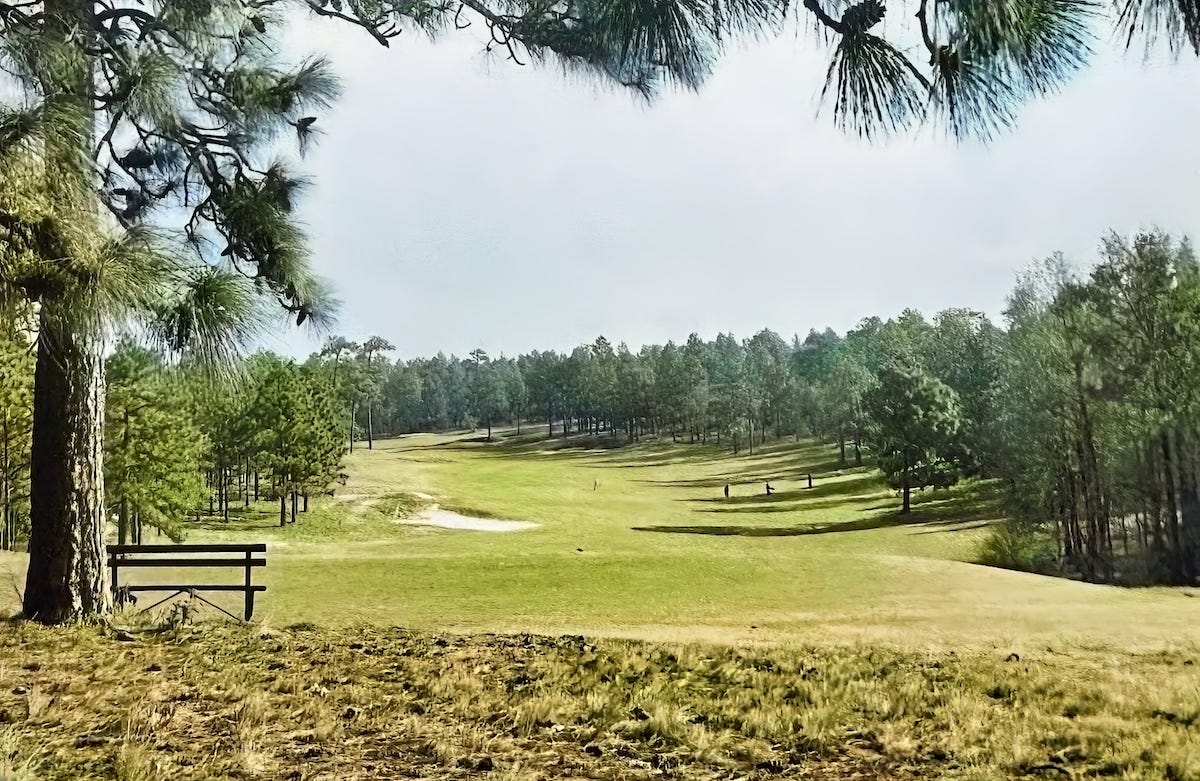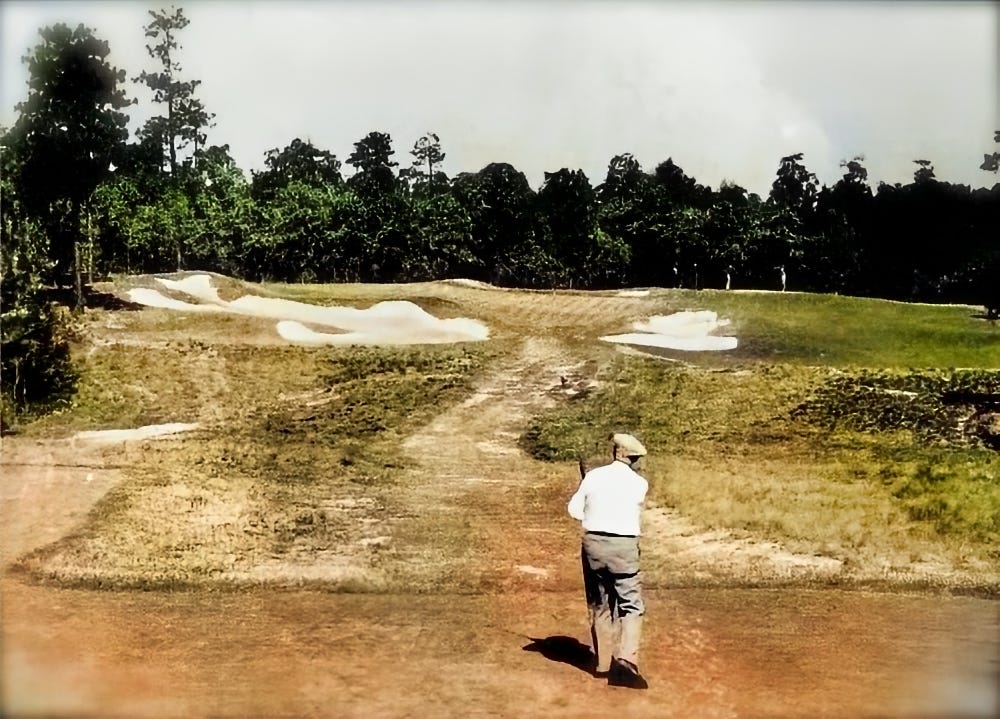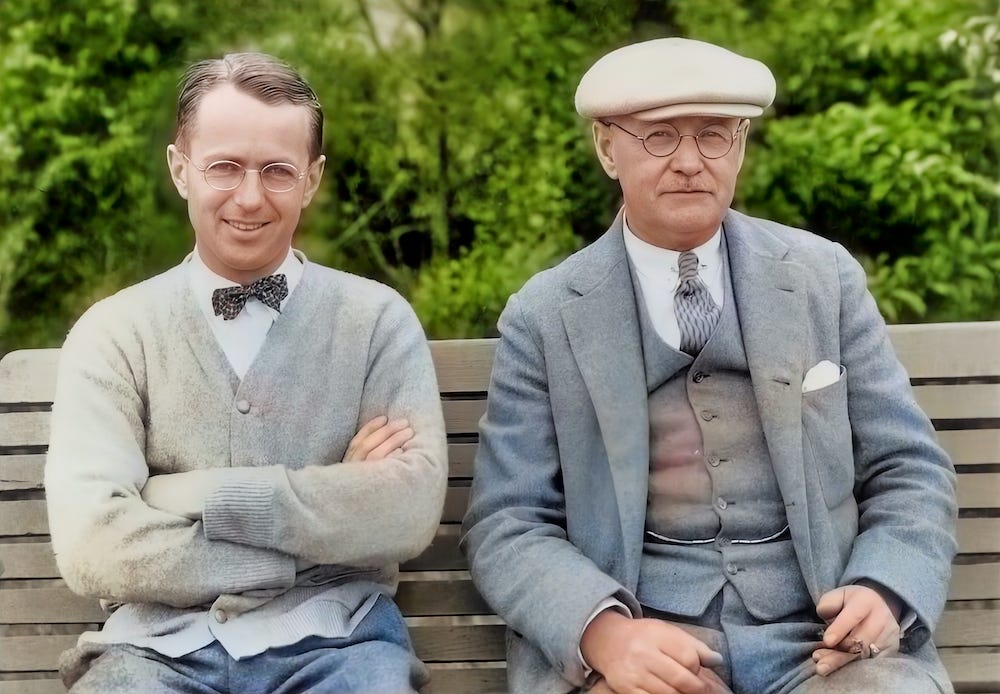Quad Questions With Donald Ross
Part 1 with the maestro of Pinehurst discusses how he started in the golf business, his design philosophy, and his views on the evolving game.
Donald Ross. Clubmaker. Carpenter. Instructor. (Actual) game grower. Rules advocate. Philosopher. Rosarian. Agronomist. Hotelier. And he’s synonymous with lovable, quietly sophisticated design work spread across the United States despite a vast output that should have produced mass mediocrity. But thanks to his careful study, good fortune, and a remarkable team of artisans, Ross's creations continue to be revered for their subtlety, ingenuity, nuance, attention to detail and daily playability (a.k.a. fun).
Each time the U.S. Open returns to Pinehurst, an opportunity arises to celebrate the 21st-century realization of everything Ross did to spread the purest version of golf imaginable while making the North Carolina resort town America’s answer to St Andrews.
Donald Ross is to Pinehurst what Old Tom Morris was to St Andrews.
In this latest edition of Quad Questions, the legend discusses how he got into golf, his design philosophy, his views on certain rules, his feelings about the golf ball going too far, and today’s one-dimensional youth. Part II will explore his work at next week’s U.S. Open host course.
GS: How’d you get into the golf business?
DR: It's very peculiar. You see, when I got through my schooling I became a carpenter by trade and worked where I lived, up in Dornoch in the Highlands. I belonged to the golf club and played there, and finally, the members came to feel that they needed a professional at Dornoch, someone to make clubs and give lessons.
In those days, you see, golf clubs all were made by hand. Now they are modeled and turned out by machines, but there were no machines for such things back then. Anyway, they thought I would be the person for the job, being a carpenter, I suppose. So I went to St. Andrews for a year and Carnoustie for another, to learn the trade. And then I came home and took up the position.
I also became the greenkeeper, although we didn't dignify the task by any such title. What I really did was to go out in overalls and get down on my hands and knees, and care for the turf and the bunkers and the greens. And how I used to hate it. But, as it turned out, that was the best training I could have had for what turned out to be my future.
GS: What drew you to America?
DR: One time a professor, Robert Willson of Harvard University, came to Dornoch, and after he had played a few times he approached me and explained that golf was just beginning to catch hold in America, and that they needed someone to teach the game and promote it. He asked how would I like to come over to America.
I said I hadn’t given the matter much thought, but when he said that I could make $60 a month and I would get fifty cents an hour for lessons, I began to think about it.
GS: No offense, but $60 does not sound like much.
DR: That was three times what I was making in Dornoch. Although, when I told my mother about the idea of going to America, she said I had the best job in town, which I had, and why should I give it up? I was making £100 a year where I was. That's $500. Still, I thought I might be able to do better in this country. So I accepted the offer.
GS: Your arrival in New York was less than ideal. Not 1999 La Guardia or 2024 JFK awful, but not ideal. Were you duped into overpaying for a train ticket?
DR: I was practically flat broke when I reached Boston, but I called up Mr. Willson on the telephone and he told me to come right out and stay with him. I certainly was glad to hear him say that. But I walked all the way from Boston to Cambridge so I would have a little money left.
The next day I went out to look at the Oakley course where I was to work. It was covered with snow. It looked like an impossible problem. But I went to work on it with fifty men. That year I sent $2,000 home to my mother in Dornoch. And that’s how I got started.
GS: Can you give us your design philosophy pitch?
DR: Make each hole present a different problem. So arrange it that every stroke must be made with a full concentration and attention necessary to good golf. Build each hole in such a manner that it wastes none of the ground at my disposal and takes advantage of every possibility I can see.
GS: You’re big on rewarding tee shots with a clear view of the green, right?
DR: On two-shot holes it is highly desirable in many cases to compel the player to place his tee shot so that his shot to the green may be clear, and if not properly placed, the shot to the green may, to some extent, be blind.
On undulating land, blind shots are bound to occur, and one or two of them are not at all serious. Truth be told, I rather like them, as they add a bit of spice to the game.
GS: Look you, Mr. Spice! Your courses always seem to fit into the landscape and gracefully snake through existing landforms? What’s your advice to a young architect hoping to capture some of what makes your work so timeless?
DR: Zigzag the holes. Two or three consecutive holes going in the same direction is far from desirable. In fact, it’s decidedly monotonous. Having to contend with variable wind conditions adds zest to the game.
Do not have the line of fairways always straight from tee to green. Swing it a bit to the right or left. lt adds interest by shortening or lengthening the line of play.
Fight all artificial or formal effects. The day of old-fashioned straight edges to the line of fairways is happily past.
GS: The USGA has, at times, moved tees around pretty radically in U.S. Open setups, often to the chagrin of players who think its gimmicky. You’re a big “long tee” guy, right?
DR: The modern golf course should either have tees fifty yards long or three or four separate tees at every hole. Tees that point from various angles to the green also give a chance to take care of conditions.
With long tees, it is possible to adjust the markers according to the prevailing wind. The greenkeeper can move them up on windy days and on days when the turf is soft and the ball does not get its proper roll. When the wind does not menace, when the course is baked hard so that brassie and good iron shots are more possible for distance, when the tee shot can produce thirty yards more of distance with the bound and roll of the ball, then the tee must be moved back.
GS: Let’s move on to how the game is played. You were active on everything from the rules, to the distance question, to shaping priorities for the game. Many of your views rubbed off on your friend and future USGA president Richard Tufts. You’re a big the 14-club limit advocate. Why?
DR: The rule restricting a player to fourteen clubs had to be made. If a player gets the notion the more clubs he carries the better golf he is going to play, there never would be a limit. In due time, pack mules would have replaced caddies. As it was, the caddies of the nation were all getting humpbacked, staggering along under freight carloads.
GS: Bringing the sarcasm! Love it Donald. BTW have you seen today’s Tour bags? On second thought, scratch that. Rant on.
DR: I've been playing golf for more than fifty years, and I don't believe there ever was a round in which I used more than six clubs. Today, there's a stick in the sack for every shot. If it's a long shot, the stick is there. If it's a short shot, it's there, and if it's an in-between shot, it's there.
In the old days, the player had to make a number of shots with the same club, half-shots, three-quarter shots, and so forth. I doubt that there are a half dozen players today who can bring off fractional shots with any degree of confidence.
I don't say this in criticism. It hasn't been necessary for them to develop these shots. They've had clubs which are designed to make the shots for them. Golfers used to be made on the golf courses. Now they are made in the machine shops.
GS: In your prime did you like to play money games? Maybe a Wolf or a Rabbit or Nassau with auto two-downs?
DR: The only evil that's creeping into the game, as I see it, is the tendency to bet on it. I don't mean a quarter Nassau bet between two friends. What I dislike are the big Calcutta pools. They don't belong in such a fine, clean game.
I used to be apprenticed to Old Tom Morris at St. Andrews. Old Tom used to say, “Why make a horse race out of a grand game like golf?” I've always felt that way, too. Golf is too good a game to go out for gambling purposes. You go out for the enjoyment of the game and the company, and not for the money which you may win at it.
GS: Professional tournament golfers today are not big on filling in divots or even giving them a courtesy kick-in when the turf is Bermudagrass. Given your agronomic expertise, where do you come down on this?

